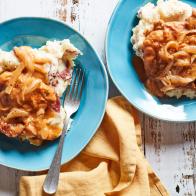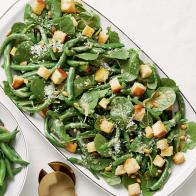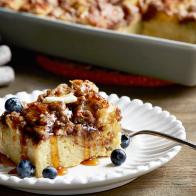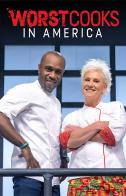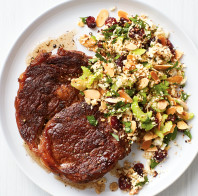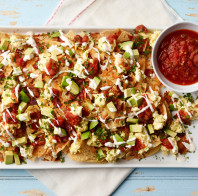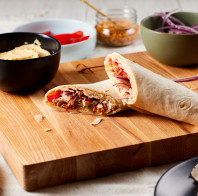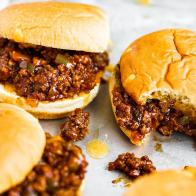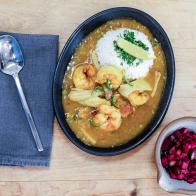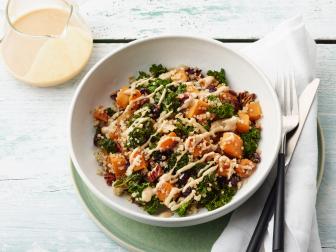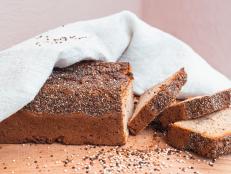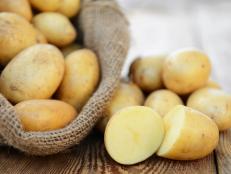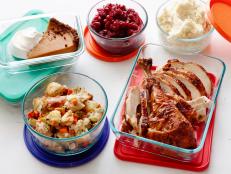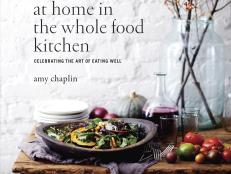How to Build a Healthy Grain Bowl, According to a Nutritionist
How to make your grain bowls as nutritious as possible.
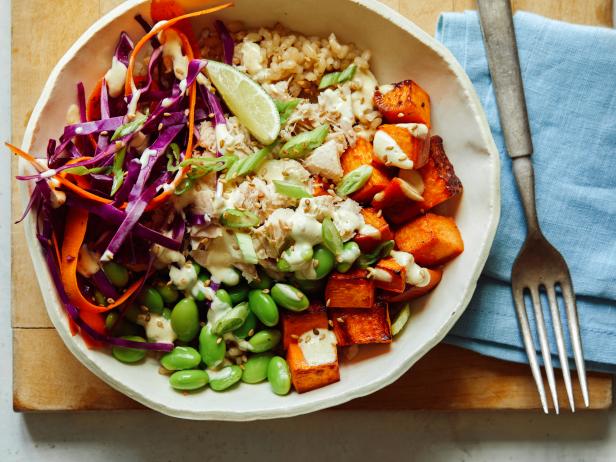
Teri Lyn Fisher
Get the Recipe: Healthy Thai Tuna Grain Bowl
“Bowl food”, more commonly referred to as "grain bowls" or "power bowls," has officially made the transition from fleeting fad to convenient staple. If you’re unfamiliar, grain bowls and power bowls are simple yet hearty, no-fuss, no-mess, customizable meals that consists of a base, a protein, an array of fresh vegetables, toppings/garnish, and some kind of flavorful dressing or sauce to tie it all together. This hot menu item is a great healthy choice when eating out, but what’s even better, is that these bowls are quick and easy to make at home too.
The explosion of bowl food is a no brainer for many registered dietitians. They are fully customizable according to individual preferences and goals, they have the ability to keep us full for much longer due to the combination of different food groups, and to top it all off, they are aesthetically pleasing and totally Instagram-worthy.
Plus, there’s no need for a recipe: This is the perfect dish to use up leftovers and whatever you have in your fridge — you just need to build a good balance of protein, carbohydrates, greens, other vegetables, and healthy fats. The combination of these four food groups is guaranteed to keep you focused and satiated for hours by helping to maintain the balance of blood sugar and hormones responsible for signaling hunger and fullness cues.
How to Build a Healthy Grain Bowl
Start with your base of good quality carbohydrates to create the perfect canvas base for your bowl. Look for whole grains like brown rice, farro, or quinoa. These have a ton of fiber and a lower glycemic index, meaning they won’t spike your blood sugar levels like refined grains will. They’ll also keep you full for much longer. Try batch cooking or meal prepping grains in the beginning of the week to trim down on prep time.
Top your base with salad greens to start building color while adding in essential nutrients. Arugula, romaine, mixed greens, and fresh herbs are all great options. Purchase pre-washed and chopped greens, or prep your greens so they’re ready for quick assembly.
Start adding some protein to help rebuild muscle and keep your hunger at bay. Chicken, fish, steak, tofu, and eggs work great.
Add in a colorful array of vegetables like peppers, sweet potatoes, tomatoes, edamame, and cucumbers. Choose whatever your favorites are — they can be cooked or raw. Remember, more colors means more nutrients, which means a more powerful bowl!
Don’t forget healthy fats! Avocado can add savory creaminess to any dish, while nuts and seeds provide a good crunch.
Tie everything together with sauce/dressings. Olive oil is a nice neutral option (and doubles as a healthy fat). Vinegar, juices from lemons and limes, and dressings can be a great way to tie a bowl together that pack a bigger punch.
Food Pairings Can Make Your Grain Bowl Even More Nutritious
Once you’ve got the basics, you can power up your bowl game with some smart nutrition pairings. Some foods work better in pairs helping your body unlock and more easily access vitamins and minerals. According to research, the following food pairings will help you optimize your nutrient absorption:
- Pairing plant-based sources of iron (non-heme iron) with vitamin C (citrus) helps to improve iron absorption in the body. This is because vitamin C facilitates the breakdown of non-heme iron into a form that can be readily used by the body. Furthermore, research shows us that the absorption power of iron + vitamin c is at its peak when these nutrients are consumed at the same time. Add a squeeze of lemon or orange juice to a spinach salad, or toss diced apples into a lentil dish.
- Your body needs vitamin D to absorb calcium. Calcium keeps your bones, teeth, and muscles — including your heart — healthy and strong. Without enough vitamin D, one can’t form enough of the hormone calcitriol (known as the “active vitamin D”). This in turn leads to insufficient calcium absorption from the diet. In this situation, the body must take calcium from its stores in the skeleton, which weakens existing bone and prevents the formation of strong, new bone. Mushrooms are a great source of vitamin D while kale and cheese are good sources of calcium. Throw these ingredients into your bowl to help protect and maintain bones and muscles!
- Your intestine absorbs fat-soluble vitamins (vitamin A, vitamin D, vitamin E, and vitamin K) when they’re paired with a fat source. If possible, make sure the fat source is largely unsaturated, such as nuts, seeds, avocado, olive oil or olives. You’ll find vitamin A and vitamin K in leafy green veggies; vitamin A in orange and yellow veggies and tomatoes; and vitamin E in a variety of nuts and seeds.
No matter what your goals are, bowl food can be a great idea for meals, snacks, and everything in between.
Healthy Grain Bowl Recipes
Vanessa Rissetto received her MS in Marketing at NYU and completed her Dietetic Internship at Mount Sinai Hospital where she worked as a Senior Dietitian for five years. She is the co-founder of Culina Health and is certified in Adult Weight Management (Levels I & II) by the Academy of Nutrition and Dietetics, and the founder of Culina Health. Her work in private practice also includes treatment of GI disorders, bariatric surgery, weight management, PCOS, and family nutrition. She loves helping clients take an active role in their health journey, motivating them and ensuring that they always achieve success. Vanessa was named by one of the top 5 black nutritionists that will change the way you think about food by Essence magazine. Vanessa lives in Hoboken NJ with her husband, two kids and their new goldendoodle Freddie. An exercise enthusiast, she is always up for a class as long as it's after she rides her Peloton.
*This article was written and/or reviewed by an independent registered dietitian nutritionist.
Related Links:

